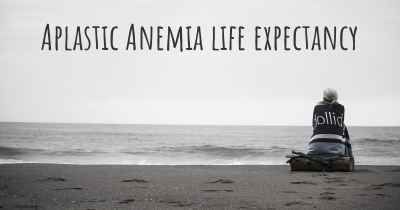Can people with Aplastic Anemia work? What kind of work can they perform?
See how people with experience in Aplastic Anemia give their opinion about whether people with Aplastic Anemia can work and what kind of jobs are more appropriated for people with Aplastic Anemia

Can people with Aplastic Anemia work?
Aplastic anemia is a rare and serious condition that affects the bone marrow, leading to a decrease in the production of red blood cells, white blood cells, and platelets. This can result in fatigue, weakness, increased susceptibility to infections, and a higher risk of bleeding. The severity of aplastic anemia can vary from mild to life-threatening, depending on the extent of bone marrow damage.
Whether individuals with aplastic anemia can work or not depends on several factors, including the severity of their condition, their overall health, and the specific demands of their job. It is important for individuals with aplastic anemia to consult with their healthcare team, including hematologists and occupational health specialists, to determine their ability to work and the necessary accommodations that may be required.
Factors influencing workability:
- Severity of Aplastic Anemia: The severity of aplastic anemia can vary greatly among individuals. Some may experience mild symptoms and respond well to treatment, while others may have more severe symptoms and require ongoing medical interventions. The severity of the condition will impact an individual's ability to work and the type of work they can perform.
- Treatment and Response: Treatment options for aplastic anemia include blood transfusions, immunosuppressive therapy, and bone marrow transplantation. The effectiveness of these treatments can vary, and individuals may experience periods of remission or relapse. The response to treatment will influence an individual's ability to work and their overall health status.
- Overall Health: Aplastic anemia can have a significant impact on an individual's overall health. Fatigue, weakness, and increased susceptibility to infections can make it challenging to perform certain job tasks. Additionally, individuals with aplastic anemia may have other health conditions or complications that further affect their ability to work.
- Job Demands: The specific demands of a job play a crucial role in determining whether someone with aplastic anemia can continue working. Jobs that involve physical exertion, exposure to infectious agents, or a high risk of injury may not be suitable for individuals with compromised immune systems or a higher risk of bleeding. However, individuals with milder forms of aplastic anemia may be able to continue working in less physically demanding roles.
Types of work suitable for individuals with Aplastic Anemia:
While the ability to work may vary among individuals with aplastic anemia, there are several types of work that may be more suitable for those with this condition:
- Sedentary Office Jobs: Jobs that primarily involve desk work, such as administrative roles, customer service, data entry, or writing, can be more manageable for individuals with aplastic anemia. These jobs typically have lower physical demands and reduced exposure to infectious agents.
- Remote or Telecommuting Jobs: With the increasing availability of remote work options, individuals with aplastic anemia may find it beneficial to work from home. Remote jobs can provide a more flexible environment, reduce exposure to infections, and allow for better management of fatigue and medical appointments.
- Part-Time or Flexible Work: For individuals with fluctuating symptoms or ongoing medical treatments, part-time or flexible work arrangements can be helpful. This allows for better management of energy levels and the ability to attend medical appointments as needed.
- Workplace Accommodations: Depending on the specific needs of individuals with aplastic anemia, workplace accommodations may be necessary. These can include adjustments to work hours, modified duties, provision of personal protective equipment, or changes to the physical work environment to reduce the risk of infections or injuries.
It is important for individuals with aplastic anemia to communicate openly with their employers about their condition and any necessary accommodations. Employers have a legal obligation to provide reasonable accommodations to individuals with disabilities, including those with chronic health conditions like aplastic anemia.
Conclusion:
While the ability to work with aplastic anemia depends on the severity of the condition, overall health, and job demands, many individuals can continue working with appropriate accommodations. Sedentary office jobs, remote work options, part-time/flexible work arrangements, and workplace accommodations can help individuals with aplastic anemia maintain employment while managing their health condition. It is crucial for individuals to work closely with their healthcare team and employers to determine the most suitable work options and necessary accommodations.
Posted Mar 17, 2017 by Jacqueline 1152
Posted Mar 17, 2017 by Angie 500
Posted Mar 17, 2017 by John 2150
Posted Mar 20, 2017 by Kimberly 500
Posted Nov 6, 2018 by Dayna 900








